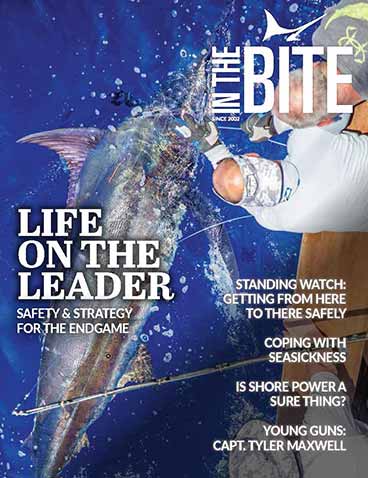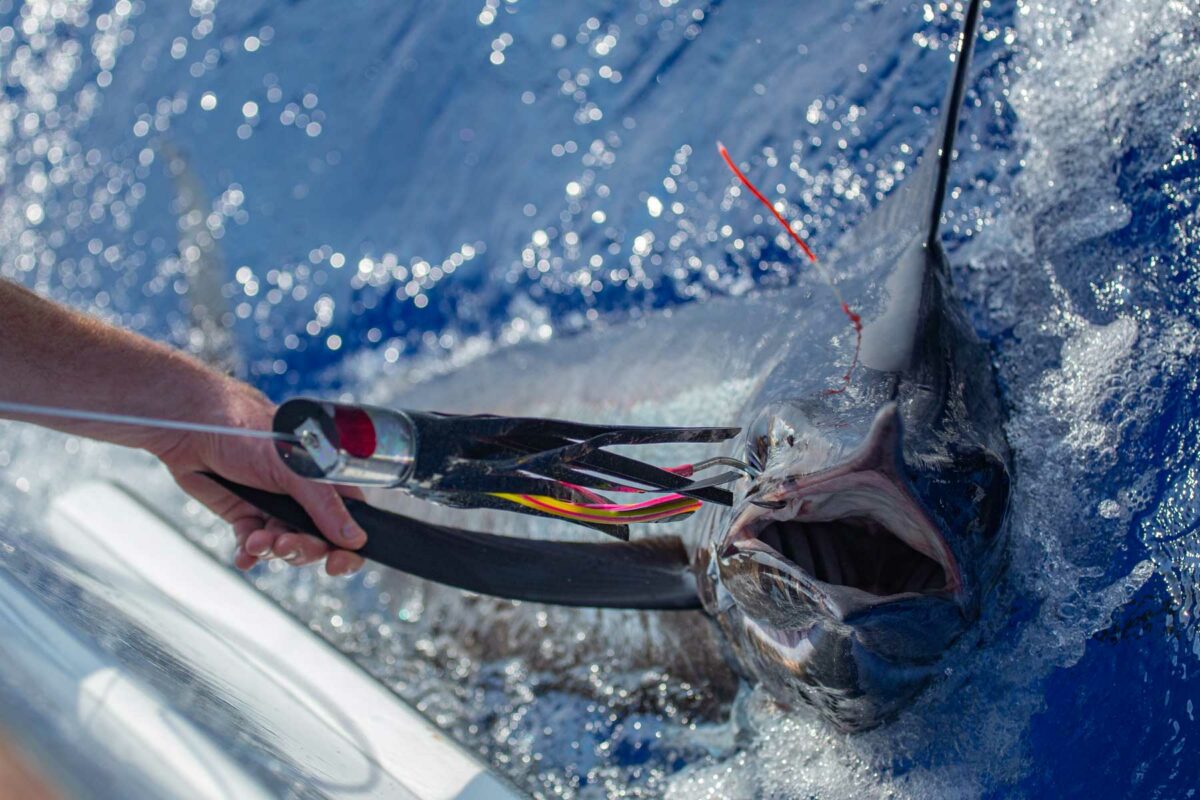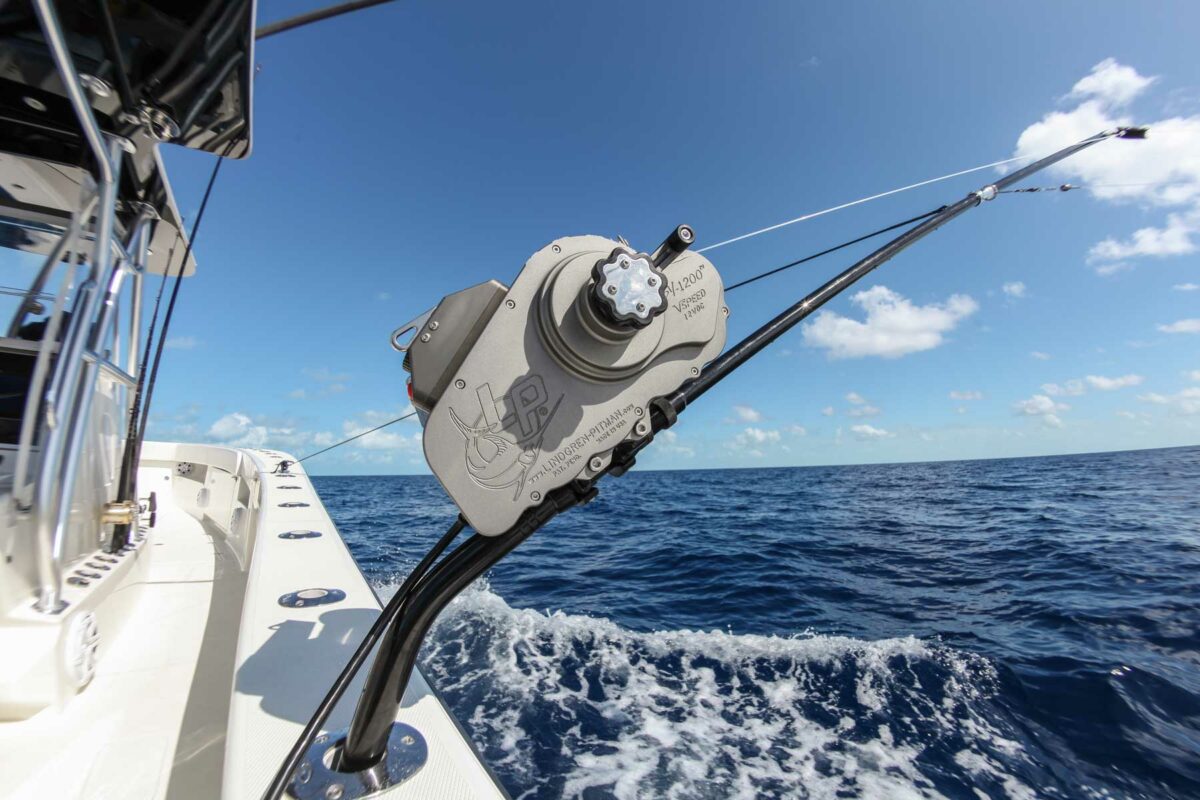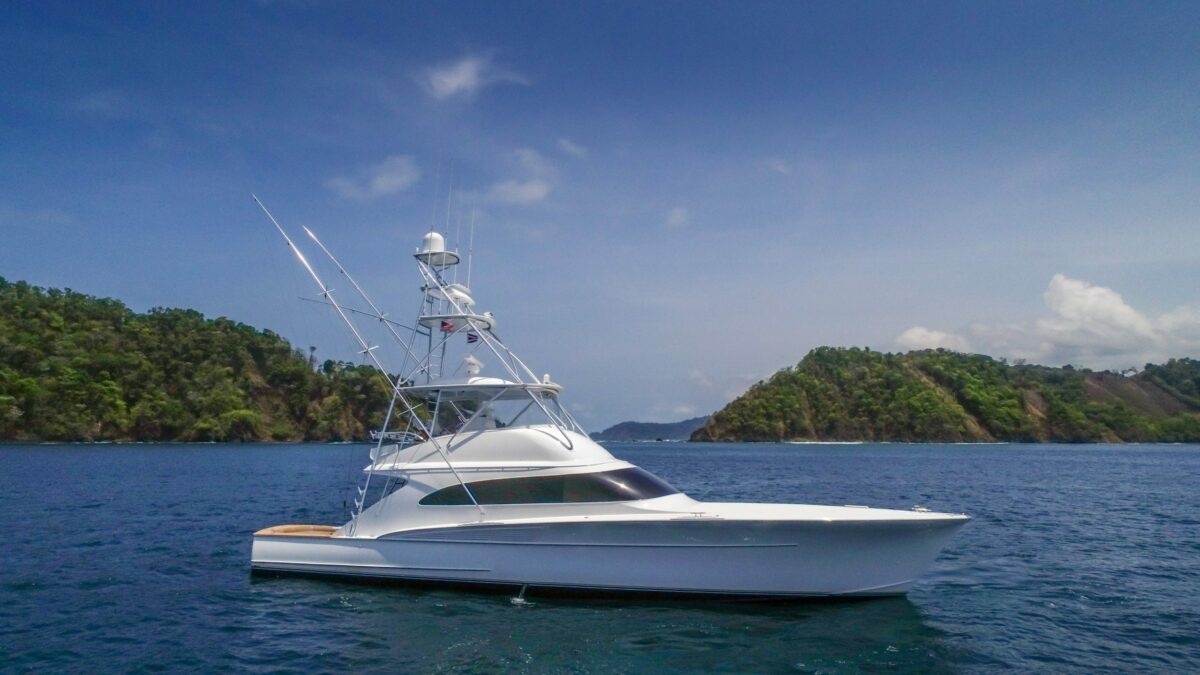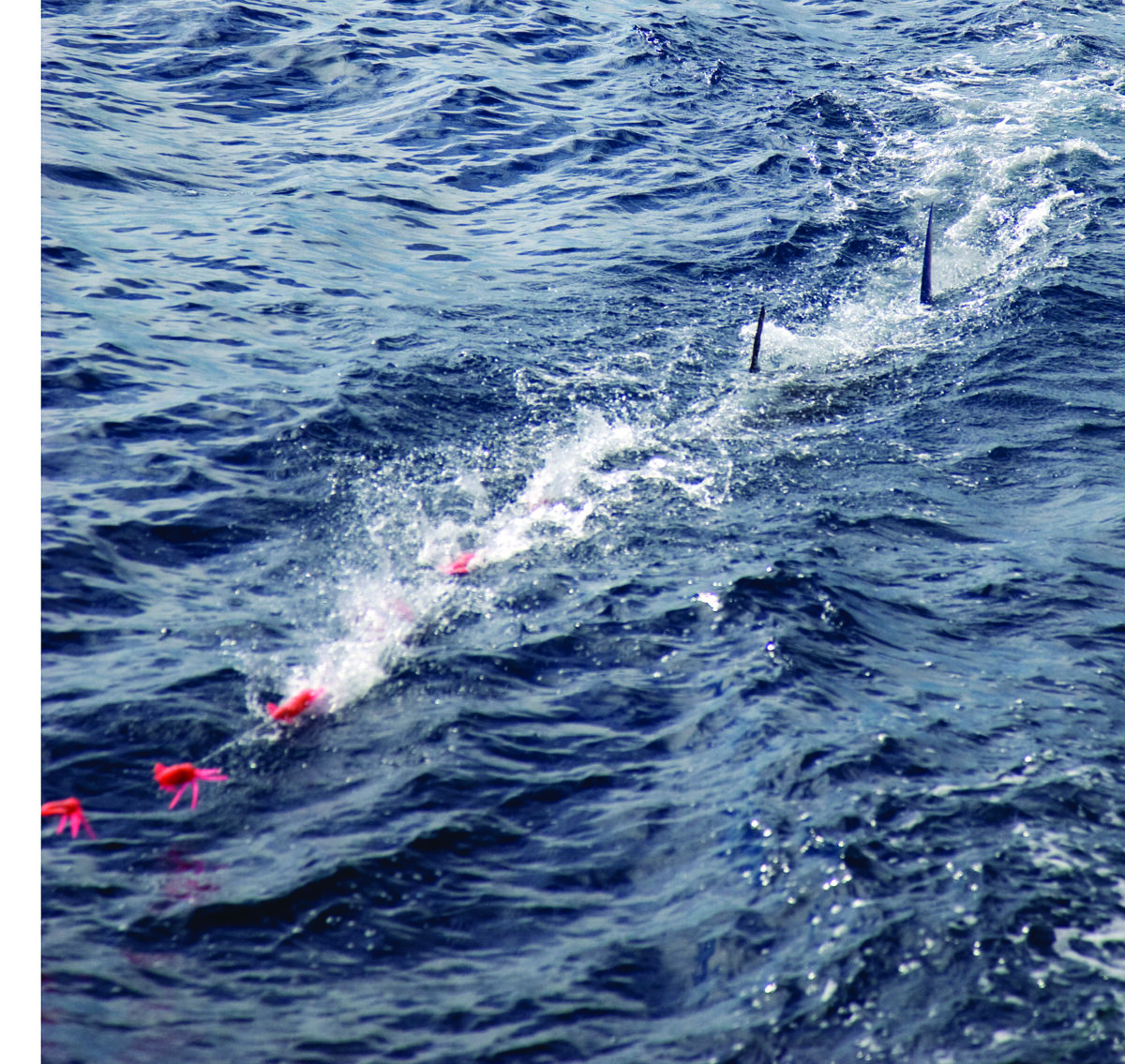It occurred to me that this billfishing-with-lures thing we do is a lot like what Ive done most of my life in the automobile business. It about attracting customers and eventually closing the deal. The oldest marketing adage in the book is AIDA. It was coined by some marketing genius way back in the late 1800s. It stands for: Attention, Interest, Desire, Action. Isnt that exactly what were trying to do with our spread of teasers or lures? These hunks of plastic and rubber have to accomplish AIDA and do it consistently for us to have success with the billfish that we pursue so fervently. The most important thing the lure must do, and before anything else can happen, is get the attention of the fish. Next, there got to be enough INTEREST aroused to stimulate the chase. Then the DESIRE to eat (I know, this might be a stretch). It all happens so fast, but if it to culminate in the desired ACTION the BITE that lure needs to have all the right attributes to close the deal. Sounds simple doesnt it. But think about it. The attention part should be relatively easy. Lots of splash and noise, right? But then what? Now the fish is eyeball to eyeball with a lure. If it doesnt look and act just right then that fish is outta here. That lure has to be good enough to eat! And because we know billfish behavior is not consistent”not from day to day, not from one fish to another”no single lure is going to maximize our productivity. So now we have to analyze all the factors that enter into lure selection. These are the things that somehow can magically combine into a formula that not only attracts the billfish, but also stimulates it to attack the lure. There are seven factors that I consider in determining which lures to use as well as when and how to use them. And by the way, none of those factors necessarily relates to the maker of the lure. We all have our favorites, sometime even for good reasons. I believe that most manufacturers have effective lures on their shelves. Consider the factors Ill discuss, put in your trial and error time, use good judgment, and youll be OK. My seven factors are: size, shape/action, color, hard vs. soft, position in the spread, sea conditions and boat speed.
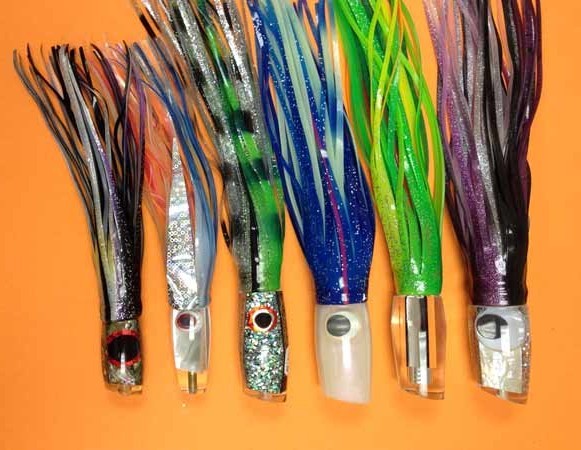
Some Nick Smiths choice Plungers
Size
Lure size will obviously have some correlation to the targeted species and their feeding characteristics. I like to have different size lures in my spread, but they will be in a size range appropriate to the billfish were pursuing. For sailfish, spearfish and the smaller marlin, Ill use 8-10-inch lures on my long riggers and progressively get larger on the shorter positions. We know that these fish will often go after bigger baits so in general, I think erring toward the larger size is OK and will likely get their attention better.
Of course, weve also seen these billfish feeding on one inch long minnows, so we have to stay alert to their behavior and preferences on any given day. The Hawaiian crews probably employ the widest range of sizes, pulling giant Magillas on their short corner while dragging a 5-inch jet on their long stinger line. And often the big blue one will climb on that tiny bait. (I think one of the reasons for that concept working well in Hawaii is the consistently calm seas that allow those little lures to be seen). The majority of my blue marlin teasers will fall into the 11 to 15 inch range, but that can vary somewhat depending on circumstances. Sometimes it the largest lures which can be the most effective.
We know big marlin can eat baits that are far bigger than anything youll pull behind your boat, so dont be afraid of a 20-inch lure that weights several pounds. Just make sure that if youre using it as a teaser, you can get it away from a hungry marlin. To facilitate retrieval of these monster teasers, some ingenious crews have even created streamlining devices which drop back over the lure head after a marlin has been raised to it.
Consideration must also be given to a lure weight. All things being equal, a heavier lure will stay in the water better and swim deeper. The added weight might detract slightly from the action, but that a trade off Im willing to make. Also think about how important it is to you that the lure is always swimming top up. Dont disregard that, especially on a straight-faced lure (any face that oriented at 90°). We go to great length to skirt lures so they look right (to us and the billfish). Only a few lure makers have made the effort to place their weight in the bottom of the head so it will always pull in an upright position. You make the call whether it important.
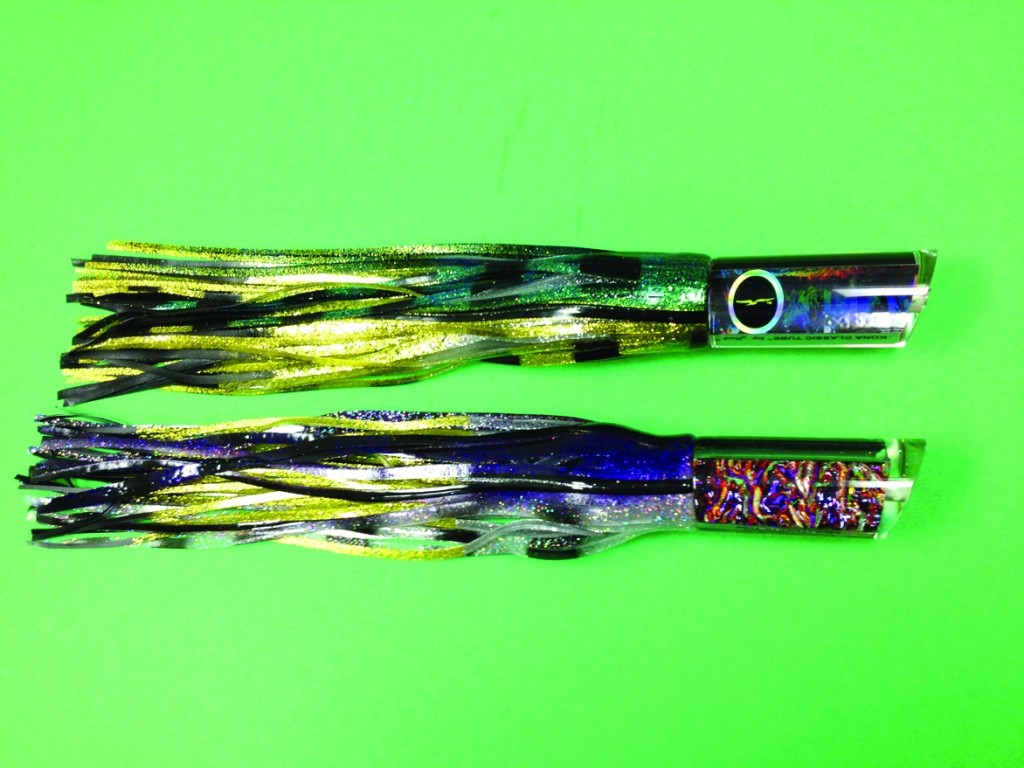
Shape/Action
Shape is, in my opinion, the most important factor in lure fishing. There are generalized facts that are always going to be in play. For example, short, stubby, heads will not be as stable as a proportionately longer one. Those shorter heads will raise billfish but theyre sensitive to pulling angle, sea conditions and boat speed. They require too much attention and because better styles have become available, I dont use them anymore.
Jet heads are simply lure heads with holes drilled or cast into them. Properly designed, jets will create a larger bubble trail, but not much will change with the lure action. Bullet head lures, often with jets, dont really fit into my concept of teasers. Put a hook in it and fish it way back behind your other lures and youll have some success with those lazier billfish that are looking for an easy meal.
We know there is a wide variety of head designs with many obvious differences and a lot more subtle things that differentiate one from another. Ill try to categorize the styles as thoroughly as space will allow.
Straight 90° cut face with some taper to the head: Sometimes referred to as a pusher. The Moldcraft Wide range is an example that most of us are familiar with. Bart Candy series is a double tapered version. Stays in the water very well. Tight wiggle. Good intervals between swimming and smoking. Just enough turbulence. Gotta have one in the spread.
Plunger: Probably developed in Hawaii by Joe Yee. His Super Plunger made him famous. Straight cut, but angled face. Elongated with some taper (which differs from manufacturer to manufacturer), it dives and swims, then comes back to the surface with some noise. Stable and very consistent regardless of conditions. Another gotta have.
Apollo or Ruckus style: Like a shorter plunger. Sometimes built with a little more face angle. (If yours acts too erratic, it has too much angle). Often has a more pronounced forward and rear taper. When the combination is right, this is an extremely effective design. It dives, swimming with a wider motion than the plunger and pops up to the surface with gusto, sometimes while changing directions. Most manufacturers have a version, but some stand out from the crowd. Talk to the guys that see the most marlin so you dont buy dozens of lures just to end up with one or two good ones.
Kona Head: Thought to be the first design to come out of Hawaii, it has stood the test of time. Through many refinements, most of today examples are more stable and consistent than the originals. Designed with a scooped, angled face, these lures have the most action of all. Often called a swimmer or scoop. When properly balanced and weighted, with just the right face, this lure swims like the real thing. Somewhat speed sensitive. I always like to have one behind my boat.
Tube: As the name implies, the tube is cylindrical. It maintains the same head diameter from front to rear and employs a straight-cut and relatively steep angled face. Though not a great all-around lure, it can be your most effective piece under the right conditions. At its best in calm to moderate seas, especially when there bait on the surface. This lure is erratic, skimming across the surface in different directions and acting a lot like a small predator chasing bait.
Chugger: Again, the name tells you what it is. Creates the most attention by pushing a lot of water and making turbulence. Big profile. Somewhat sensitive to speed and rougher water, so you guys in the pit have to do more tuning. Some of the newer versions have incorporated a longer head, and/or more weight resulting in greater stability. This is a good design for light tackle anglers who need a smaller lure with smaller hooks, but looks big.
Because there are so many variations with probably thousands of lures on the market, there are some very good ones. But many are simply not good enough. And it not easy to know because the array of products is so vast as to almost blur the differential not only between individual lures but even between head shape categories. Only your experience or that of your peers will tell you which to choose.
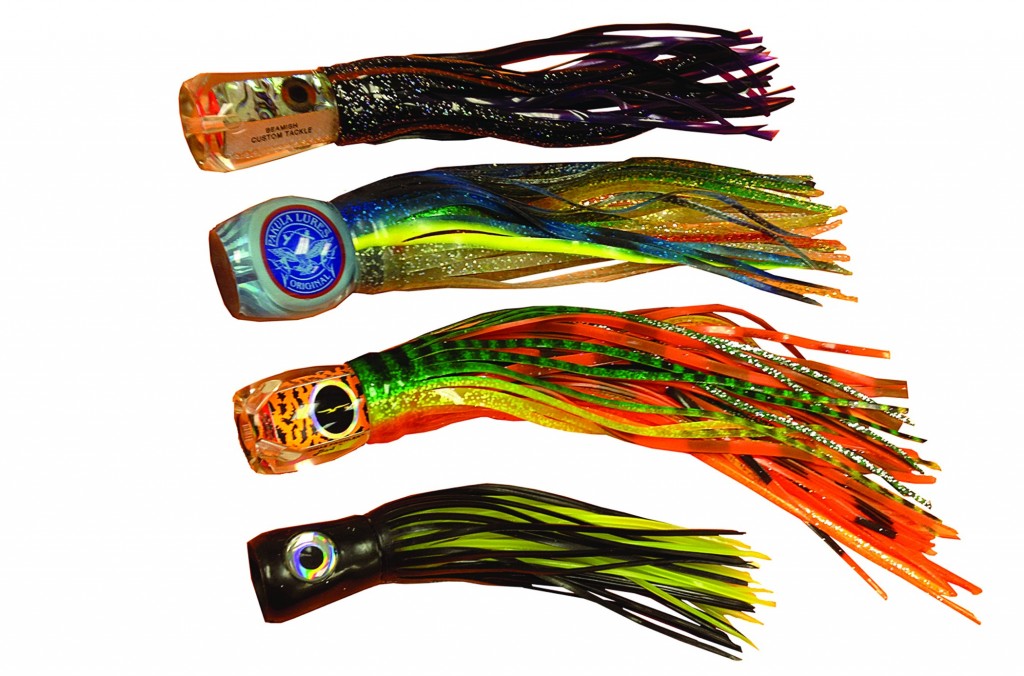
Color
Colors are so diversified and opinions so varied that I hate to get too far into this topic. Most of you have your favorites and for good reasons. Obviously, colors can and do change with the different geographical areas, the local knowledge, prevailing forage species, and endless other factors. For some reason, I have found that certain color combinations seem to always work no matter where we fish, not matter what the targeted species. For example, purple, black and silver is a combination that will always be in the water behind my boat. Everything else is fighting for second place. Im going to let you go with what you like. We know were going to raise the most billfish with the colors that spend the most time in the water! A concept that has some credence is having one brightly colored lure in the spread that stands out from all the rest. Ive experienced days when literally every fish comes to that lure. Another concept that I believe is important (although sometimes overly emphasized) is match the hatch. Somewhere in my spread there going to be a lure that closely imitates the prevailing bait species.
Hard vs. Soft
This is an area where therell be never-ending controversy. They both work! Im more concerned with a lure ability to raise the most billfish than with whether it hard or soft. There are days when my mates tell me the fish arent continuing the tease after striking at the hard lures. They should know, so Ill go with soft heads where I can, at least for a while. Usually I start the day with what I consider my best spread for the conditions and it will include both hard and soft bodied lures.
As a teaser, a hard head may be easier to get away from a fish that clamps down on it, as it will slip out of his jaws easier. On the other hand, it possible that some fish could shy away after striking a rock hard object. I do know that we have actually caught over a dozen billfish on hookless teasers. All of them have been on soft heads. Go figure!
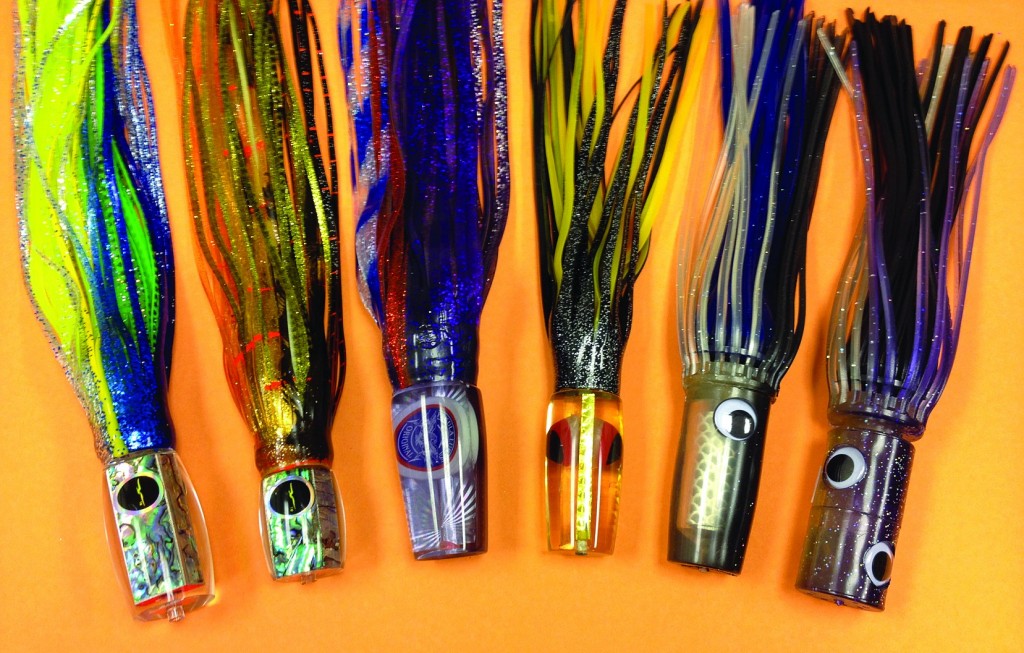
Position
The position of each lure in the spread is a factor that many lure makers strongly emphasize. Personally, I believe that most lures can be made to work effectively by careful height and distance adjustments regardless of position. Speed might also need to be tweaked to achieve optimum performance. I believe size of the lure also relates importantly to position. In close, where there lots of white water, I want my biggest and noisiest lures. Conversely, the long rigger baits are back in clean water and hence, can be smaller. The most important criteria relating to lure position is to achieve absolute maximum performance from every lure in your spread with ALL lures working at that highest level at the same time! Keep this up all day, every day and youll be holding your head high back at the dock.
Sea Conditions and Boat Speed
These two factors have a great deal of impact on how our lures behave. Generally speaking, calm condition allows for noisier lures (if desired), and higher trolling speeds. Youll have more flexibility on how far behind the boat your lures are located. Calmer conditions provide a great opportunity to experiment with a variety of things; bring out an untried lure, stagger your distances, push up the throttles a notch or two. Conversely, rougher conditions will dictate that you go with proven lures that stay in the water. You still have to cover ground so you dont want to throttle back too much. Lengthen your distances behind the boat because youll be creating more white water in those rough conditions. Consider larger lures where appropriate because therell be a lot of white water that could camouflage smaller ones. Depending on how rough it becomes, youll want to regulate your speed so that your lures maintain their best action. Rougher water will impart action to the lures and therefore you will be able to reduce speed if necessary. Now for the hard part! Putting it all together. Here your challenge. . .take it and run with it! Develop a spread of lures that always works in harmony, no matter the conditions. Each lure should be different and able to exhibit its best characteristics so that regardless of the billfish behavior and preferences, youll have a lure to suit every situation.

